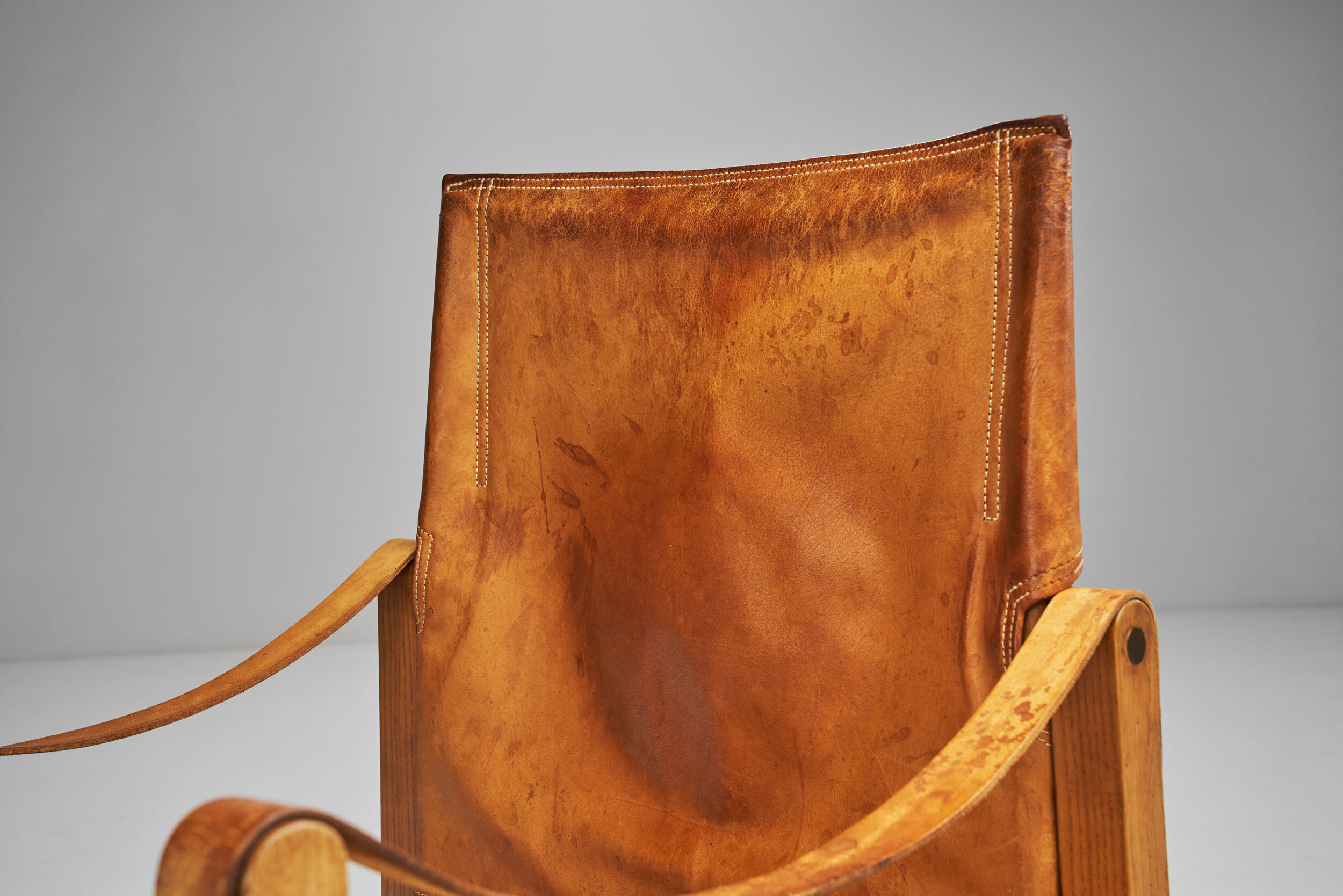Kaare Klint KK47000 "Safari" Chair in Patinated Leather for Rud. Rasmussens Cabinetmakers, Denmark 1930s


















Kaare Klint KK47000 "Safari" Chair in Patinated Leather for Rud. Rasmussens Cabinetmakers, Denmark 1930s
REQUEST PRICE HERE
Price category: 2,500 - 5,000 usd / eur
Kaare Klint’s “KK47000” Safari Chair is a refined version of the chairs brought on an African safari by an American cinematographer and his wife. Klint noticed the chairs in the couple’s photos, and they were most likely based on Roorkhee Chairs, the seminal pieces of British campaign furniture used by the military – they were possibly among the first examples of self-assembled furniture.
The Roorkhee chair featured joints without any glue, tool-free assembly, and an intelligent construction that caused the joints to tighten when the chair was occupied, enhancing strength and stability. Klint focused on simplifying, clarifying, and refining the lounge chair’s structure, exhibiting his final Safari Chair design in 1933 at the Copenhagen Cabinetmakers’ Guild Exhibition. The relatively simple ash wood frame is a perfect base for the beautiful patinated leather parts of the structure. The visible joinery and leather straps give this chair a raw aesthetic that stands out in any interior, especially when surrounded with more muted pieces. The chair is supported by carved, tapered legs that add refinement to the appearance.
This chair is an iconic example of Kaare Klint’s design ideology. Klint effortlessly transformed an historical archetype into a modern, collapsible chair. While inspired by its British predecessor, Klint’s sophisticated, lightweight chair is defined by his signature systematic approach, fine craftsmanship, well-conceived proportions, and remarkable material effects.
Condition:
In good vintage condition. Wear consistent with age and use. Some minor scratches on the wood. The chair has its original leather upholstery with splendid patina.
Dimensions:
22.63 in W x 24.6 in D x 31.69 in H; Seat height 13.18 in
57.5 cm W 62.5 cm D 80.5 cm H; Seat height 33.5 cm
Literature:
Noritsugu Oda, “Danish Chairs”, ill. p. 26.
About the designer:
Recognized as the father of modern Danish design, Kaare Klint (1888-1954) designed icons such as the 1914 Faaborg Chair and the 1933 Safari Chair, as well as the design for the reception room of the Danish Pavilion at the 1929 Barcelona International Exposition.
As the son of architect Peder Vilhelm Jensen-Klint, Kaare Klint was immersed in architecture from an early age, but made his mark on Danish design history as a furniture designer and educator. In 1924, he helped establish the Department of Furniture Design at the Royal Danish Academy of Fine Arts. As associate professor and later professor, he inspired some of the greatest Danish furniture designers and architects – including Hans J. Wegner, Mogens Koch, Arne Jacobsen and Poul Kjærholm – who would continue shaping the Golden Age of Danish design from the early 1940s.
Klint had an outstanding sense of proportion and space, and created “human furniture” based on studies of the human body. He studied an object’s uses over its form, and renewed Danish furniture design by refining tradition and developing objects perfectly in relation to their primary purpose. Klint was also aware of designs’ relationship to its environment, insisting his pieces never dominate a space, but unite form and function for a greater whole.
Klint earned many accolades, including the Eckersberg Medal in 1928 and the C.F. Hansen Medal in 1954. In 1949, he became an Honorary Royal Designer for Industry in London. Today, Klint is regarded as a reformer: as one of the first designers to put functionalism and the practical study of architecture and furniture design principles above style, he redefined a period otherwise characterized by style-focused academic teaching. ~H.












